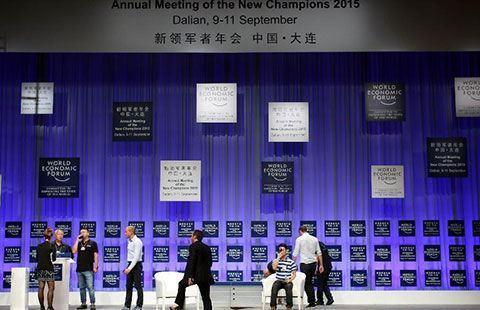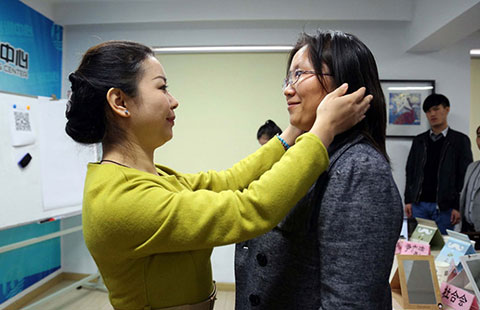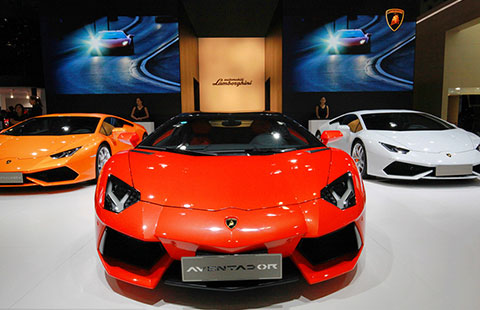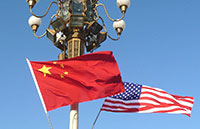Chocolate companies see sales melt away
By Shi Jing (China Daily) Updated: 2015-09-02 09:14
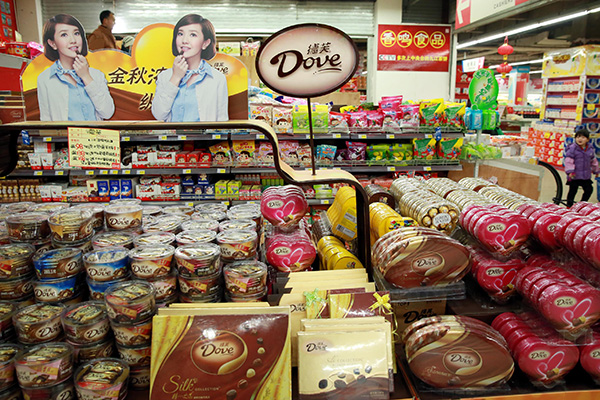 |
|
Dove chocolates, part of the Mars Inc, on sale at a supermarket in Nanchang, captial of East China's Jiangxi province. [Photo provided to China Daily] |
Still, China is expected to consume 220,700 metric tons of chocolate this year, or an increase of 6.3 percent on 2014, according to Euromonitor. That is on a par with recent annual growth rates, but there are concerns those figures are unsustainable in the future. Just like Mars, Mondelez and Hershey, Nestle SA also faces a "difficult" economic climate.
"Past growth was built partly on expanding sales to new consumers in second-and third-tier cities in China, but now those places are saturated and chocolate makers must convince Chinese consumers simply to eat more," Xu Ruyi, head of research at Mintel China, a leading research firm, told Reuters news agency.
Sales in hypermarkets and supermarkets in the first-tier cities, such as Beijing and Shanghai, have declined in the past few months, which is one of the reasons for Hershey's stagnant performance in the market.
"As the country moves to the new normal, which is more consumer-led, we are seeing a good shift, but it will not come easily," Schiller said. "The falling stock market has dented consumer sentiment and China's middle classes are saving more and spending less."
Disappointing sales during the Chinese New Year holiday left Hershey playing catch-up for the rest of 2015. Promotions and marketing have helped stimulate growth, but that is not a long-term fix. Another concern has been Shanghai Golden Monkey.
Hershey bought an 80 percent stake in SGM last year, but sales have not held up.
"The company's performance was poorer than anticipated," Schiller said, adding that Hershey will complete the full acquisition of SGM by the end of the year. "But Golden Monkey will be an important part of our overall strategy in China."
It will also help Hershey diversify in the country. SGM's bulging portfolio, which includes popular products such as candies and dried bean-curd, will enable the parent company to expand into lower-tier Chinese cities.
"People in lower-tier cities have more disposable income," Schiller said. "The middle class group has been growing and this will help our retailing business in China."
His view is backed up by the numbers. While the Consumer Confidence Index, or CCI, for first-tier cities dipped by 1 percent in the second quarter, it jumped by 10 percentage points to 47 percent in rural regions, according to Nielsen, the global information firm.
Schiller is also confident of a strong close to the year. "We have learned that the Year of Monkey has excellent connotations. Therefore, there will be more newly weds and newborn babies," he said. "We believe this will help improve our sales in e-commerce, especially now we have Shanghai Golden Monkey."
- 2015 China International Fair for Investment and Trade kicks off in Xiamen
- China's commodity imports robust in Jan-Aug period
- China stocks rebound 2.92%
- 2015 China box office already past 2014 total
- China foreign trade decline widens in August
- Interview: JP Morgan's senior executive bullish on China
- Innovation, development the focus for NZ mayors
- Lives of freelancers


